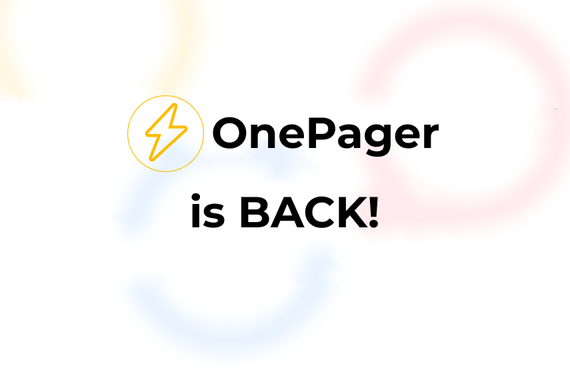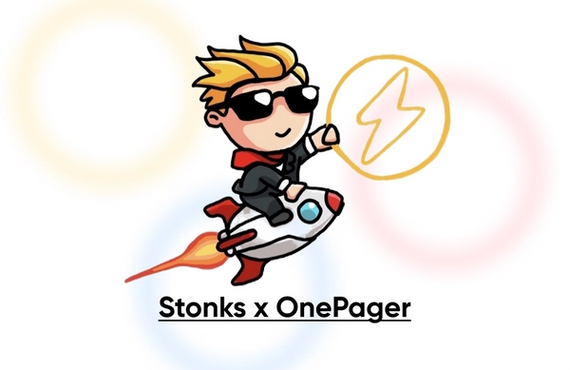Why I founded Open Scout

Adam Hardej
Prev. OnePager Co-Founder
July 30th, 2021

Hi Internet,
My name is Adam Hardej and I’m the founder of a company called Open Scout, where our mission is to displace the need for warm introductions within the early-stage financing process. I’ve been accosting friends, family members, developers, students, venture capitalists, and angel investors with bits and pieces of this story for the past year and a half so I figured it’s about time I just wrote it all down.
Some background to start:
I went to Princeton where, despite my advisor’s best efforts, I was a mediocre Economics student who hoped for a career in investment banking. I was actually able to shimmy my way into a classic 10-week New York City banking internship typically held by rising Seniors the Summer after my Sophomore year. I powerpointed. I spreadsheeted. I market researched. I read “The Martian” by Andy Weir at my desk in the mornings waiting for work to get passed down from the analysts. Big shot that I thought I was, surely destined for the most complex spreadsheets you could imagine, the next Summer I actually decided to not go back to New York and opted for a position at an emerging markets hedge fund based out of Lisbon, Portugal. I envisioned it might be a bit like a finance version of a James Bond movie, but with a little more time in the office and stellar pastries.
As it turns out — there really wasn’t much for an intern to do at the fund. I sat at my desk nonetheless. As one of my fellow interns started rereading the Harry Potter series. I started brainstorming side projects. And just like that, Tiger Bed Rentals is born: Renting Full-sized beds to college kids normally stuck in Twins for $350 a year, move-in and move-out included. We had 150 customers for our first move-in period and by the time I graduated we were serving just under 10% of the undergraduate population with 450 customers. With eyes on expansion, I decide to work on it full-time straight out of school. Just like that. From aspiring banker to aspiring mattress king.
Me and my high school friend who also had a startup (a much fancier software one I might add) moved to North Carolina together because it was a million times cheaper than anywhere our friends were moving. Looking back on it we joke that we were old-school founders — we didn’t believe in spending money of any kind. I didn’t actually own a mattress as delightfully ironic as that is. I slept on a sleeping pad and then upgraded to a free couch from craigslist a few months in. My desk was made of two sawhorses and a sheet of wood from home depot. But, I didn’t care. As far as I was concerned, that’s how it was meant to happen.

So I started fundraising. And this is where the story starts to become more relevant. I promise.
As a first-time founder straight out of school I didn’t have much of a professional network to speak of — much less an investor network. So I turned to scout programs on campus and Y Combinator. They were really the only thing I had ever heard of when it came to early-stage investors so as far as I was concerned the entire VC space consisted of Dorm Room Fund, Rough Draft Ventures, Contrary Capital, and YC. I figured it kind of worked like applying to college. So I applied.
The thing that was interesting about my first business is that the numbers looked great. Over $150k of arguably-recurring-revenue from one small private school. $0 in marketing spend. Straight forward growth plan (more schools, make our own mattresses, sell mattresses).
All the initial conversations went really well. Like I said, great numbers. We made our way to the final stages with each. And then, at the very end, it always turned downhill with a version of the same skeptical question:
“How are you going to scale this logistically?” — Gustaf Alstromer, YC partner and very nice guy
Which I actually thought I had a great answer for. They didn’t think so.
By the end of all the scout program processes and the trip to California for the unsuccessful final YC interview — I’ve been trying to fundraise for 4 months full-time and have $0. Feeling like I had exhausted all of the “apply here” options, I turned towards the world of Angel investors.
I had no idea what that meant. Who was an Angel investor? Is that another term for a rich guy? Who was going to think seriously about the opportunity and who was just passively interested? I made all of the classic mistakes. Didn’t do the right research. Didn’t ask the right people. Didn’t ask enough people. It took forever.
I was fundraising full-time for 9 months before our $250k round was full.
I moved to NYC from North Carolina and set up a small office as we headed towards a busy Summer of expansion. I still, ironically, slept on couches as we grew to rent mattresses to over 1500 customers. As a successful Summer began to wrap up though I started to face the big questions I seemed to have completely forgotten to ask myself beforehand: Did I care about renting mattresses to college kids? Was I willing to spend 5–15 years of my life growing the business? As I lay on my friends couch thinking about the best way to layer foam in our new mattress design — the answer became clear: No. I didn’t want this to be what I spent sleepless nights thinking about. (there’s a pun in there somewhere between mattresses and sleepless nights, but I can’t put my finger on it)
Leaving the company wasn’t easy or especially smooth, but was aided by the fact that we had done well. We had hit our goals and gotten through the busy part of the year. I ended up walking away with a small amount of money. Calling it an “exit” seems to evoke bigger comparisons than it deserves, but it was more money than I had any business having. So I moved off my friend’s couch and even thought about finally buying my own mattress, but ended up moving back to my parents instead.
I floated a bit. In the age old tradition of startup bro-dom — I travelled. I consulted for a mattress company and a college moving company. I tried to think about what I wanted to do next and I really wanted to make sure that I learned from my mistakes. The main mistake being to have set out to solve a problem I didn’t really believe in the importance of.
As I thought through ideas and different pain points I kept coming back to my experience fundraising as a first-time founder. The scout programs. The black-box application and email processes. The dead ends. The overall feeling of running in place.
I first voiced the semblance of an idea around this problem to a group of friends in February of 2019: “What it would be to start is a way to align founders and scouts to work towards the same goal. To have them be on the same team rather than having scouts sit on the investor side of the table.”
Most of my friends were tired of hearing me ramble about different ideas and just kind of nodded and tilted their heads to the side ever so slightly to give a physical queue that they were pondering my words. One of them, who actually had experience as an investor, said outright that he didn’t think it would work.
I ignored my investor friend who didn’t think it would work and in May of 2019 I wrote a “Scout thought experiment” that was (/is) meant to display the incentive structure of a typical scout program and the misalignments between founders and scouts that can come up. From there I started sending it around to anyone that I thought might be able to weigh in to ask how they thought about these programs and sourcing practices more generally. On my own, I started to read whatever I could on the underlying dynamics of scout programs, sourcing, and the larger world of early-stage financing.
What quickly became apparent as I learned more about not only scout programs and sourcing, but the industry as a whole — was how laughable my personal frustrations with the industry were. As a white male from the suburbs of Boston with an Economics degree from Princeton University, I’m a far cry from who’s actually getting screwed here. In an early-stage financing world driven by knowing a guy who knows a guy, at least I know a few guys and am a guy. My frustrations were really around tedium and inefficiency. The real issues here are outright lack of access. Droves of founders and potential founders with no connections or real chance at the warm introduction an investor looks for. An entire industry that screams “you can’t sit us” and makes anyone who’s not from the right school or area feel like it’s most likely not even worth the effort.
In October of 2019 I started working on Open Scout full-time with the mission to displace the need for warm introductions within the early-stage financing process — which is a fancy way of saying we don’t think you should have to know a guy who knows a guy to talk to investors. We joke that it’s a “we’re going to go land on mars” type of idea. Sounds great, definitely exciting implications, but how’s that going to happen exactly? I’ll expand on that soon.
From there the team started to grow (my investor friend joined) and we started to try to set a route towards that larger goal. With ‘displacing the need for warm introductions’ as our north-star we needed to identify baby-steps that could add immediate value for founders as well as move us closer to where we ultimately wanted to go. As you might have guessed from our name and my personal experience with scout programs, a new type of scout program is what we came up with. More specifically, the non-exclusive scout program that we launched on 33 campuses Fall 2020. We seek to work with great founders to find the best investors for them — whether they’re a part of our investor network or not.
To give an example of the “classic” structure compared to the “non-exclusive” Open Scout structure:
In the “classic” scout program structure (really any scout program besides OS), a scout will seek to identify exciting founder teams and connect them with the firm they’re associated with. For the sake of this explanation, let’s say this “classic” scout finds 5 exciting founder teams all at once. They’d look to connect those founders to their firm. To start, that connection might come as an email with 5 blurbs/memos related to how each founder team is exciting with 5 PDF pitch decks attached. From there, the associate or partner or whoever at the firm works with scouts directly would evaluate the materials and decide which founders they’d like to connect with. The effort here really comes during the search for the founders themselves and the following sales pitch if the firm is interested in working with that founder (“we add value” — scout says to founder on behalf of the firm they’re associated with).
Within the Open Scout structure on the other hand, when a scout finds 5 exciting founder teams all at once the work is really just beginning. Part of the role of the scout in this structure is still to find exciting founders, but once they do they’re now tasked with identifying the best investors for each of those founders individually. This is where things get much trickier logistically. Let’s say that a scout for Open Scout finds 5 exciting founder teams and then is able to identify 5 different investors for each of those teams that seem to be good fits (based on stage, industry focus, etc.). When that scout turns to the investor side of the equation they’re now dealing with 25 different emails with 25 different blurbs/memos and PDF pitch decks attached to each. What does follow up look like? How do the founders keep track of the progress? It quickly gets out of hand. So we built a tool.
We saw the logistical challenges of this type of non-exclusive investor structure early on and set out to build a solution that would be useful to our scouts as well as the founders we work with more generally. We call it OnePager and we hope for it to help us graduate from a world of PDF pitch decks being blindly passed around investor inboxes. Then we also launched a tool called Boards that allows scouts (/anyone) to compile OnePagers and build an audience around their deal flow.

So that’s where we are and how I got here. We launched our scout program on 33 campuses, OnePager has over 1000 users (in +60 countries which is cool), and there’s no problem I would rather be kept up at night working on. I even bought my first mattress — so things seem to be headed in the right direction.
To look ahead — this is just the beginning of our vision. College campuses and the founders there are who we feel we can bring the most value to with our scout program to start. It’s the founder I was and the user we feel best equipped to build for, but this isn’t a college founder problem. The culture of warm introductions is a problem for founders everywhere. In the year to come we’ll look to dig deeper on our OnePager tool to make it more effective for even more founders as well as continue to expand our scout program to more campuses and beyond universities.
If you have any questions, have feedback, want to support our mission somehow, or just want to say hi. We’d love to hear from you! Here’s a link to a contact page that looks like a dead-end, but will make it to my inbox — I promise.
Talk soon,
Adam


